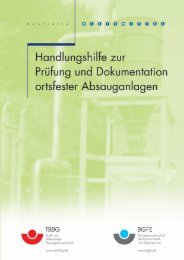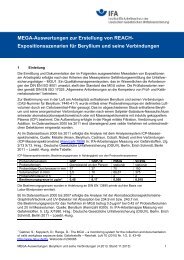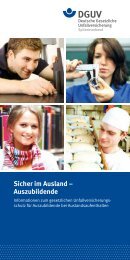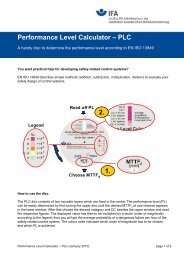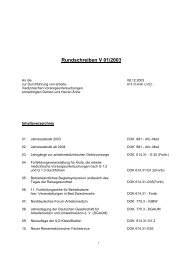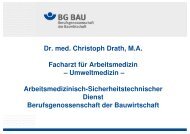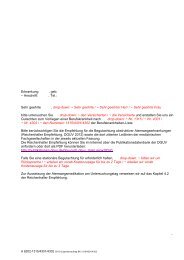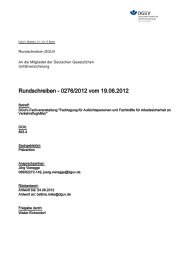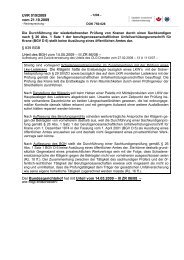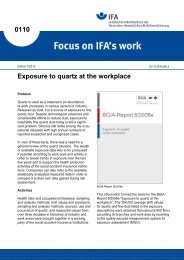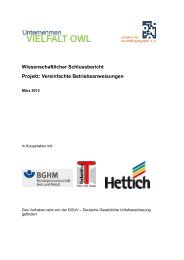Effectiveness of measures to prevent needlestick injuries among ...
Effectiveness of measures to prevent needlestick injuries among ...
Effectiveness of measures to prevent needlestick injuries among ...
Create successful ePaper yourself
Turn your PDF publications into a flip-book with our unique Google optimized e-Paper software.
4 Intervention program evaluation<br />
than one type <strong>of</strong> equipment makes it difficult <strong>to</strong> assess the effect on injury rates <strong>of</strong><br />
either one.<br />
Wright et al. tracked NSI during a ten-month interval following introduction <strong>of</strong> a<br />
needle recapping block [71]. There was a 60 % reduction in NSI that could have<br />
occurred after use, when a needle could have been recapped reported by nurses and<br />
housekeeping staff (OR 0.4; 95 % CI 0.18-0.82). The OR for cover-irrelevant <strong>injuries</strong><br />
was 0.92 (95 % CI 0.40-2.03), indicating that major changes in underlying injury<br />
rates or reporting practices during the evaluation period were unlikely. However, two<br />
fac<strong>to</strong>rs might have influenced the results, and they might have operated <strong>to</strong> either in-<br />
flate or deflate the effect estimate. Specifically:<br />
a) NSI reporting procedures were made easier during the intervention period. This<br />
would lead <strong>to</strong> an increase in the observed number <strong>of</strong> <strong>injuries</strong>, suggesting the<br />
effectiveness <strong>of</strong> the recapping block might be more protective than observed; and<br />
b) A new sharps disposal system was implemented concurrently with the introduction<br />
<strong>of</strong> the recapping block.<br />
The new system eliminated the occurrence <strong>of</strong> <strong>injuries</strong> resulting from needles protruding<br />
“through the rubbish bag”, which is <strong>among</strong> the injury types use <strong>of</strong> a recapping block<br />
would also be expected <strong>to</strong> reduce (if the disposal system had remained the same).<br />
Bebbing<strong>to</strong>n et al. conducted a good quality evaluation <strong>of</strong> use <strong>of</strong> the Suture Mate<br />
during obstetric surgery <strong>to</strong> repair vaginal tears [72]. Individuals performing the surgery<br />
included obstetricians, family physicians, residents, and medical students. Practitioners<br />
used the device for a three-week training period prior <strong>to</strong> the evaluation period, and<br />
the primary outcome measure was glove perforations as a surrogate for NSI risk.<br />
Perforations were detected through standard water manipulation, by study personnel<br />
blinded as <strong>to</strong> group assignment. The intervention group and the comparison group<br />
each contained 250 sets <strong>of</strong> gloves. Twenty gloves in the study group and 67 gloves in<br />
the control group were perforated. Based on stratified analyses, the authors concluded<br />
that the Suture Mate was statistically significantly protective in all groups except for<br />
medical students. The authors reported that 90 % <strong>of</strong> the practitioners reported satis-<br />
Report „Needlestick <strong>injuries</strong>“ 47



